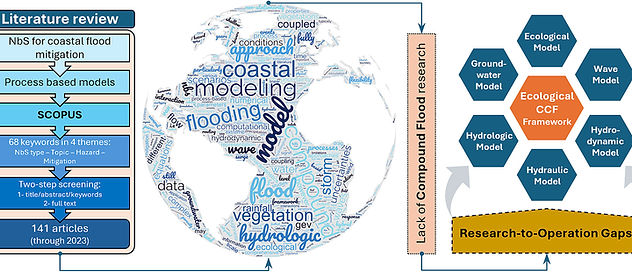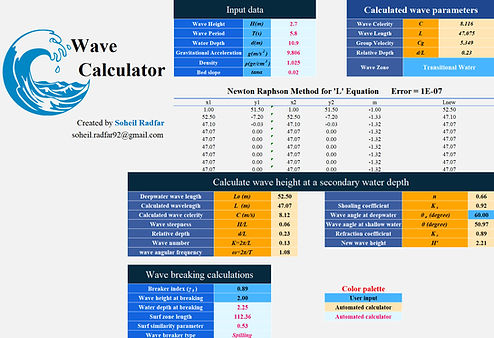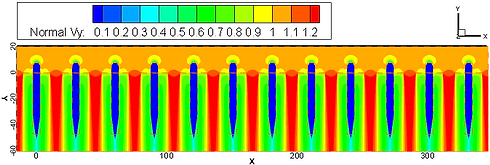My research projects in a nutshell
Integrating Newton’s Laws with Deep Learning for Compound Flood Modeling
Compound flooding, caused by the interaction of storm surge, rainfall, tides, and river discharge, poses a major threat to coastal communities. Traditional physics-based models are accurate but too slow for real-time use, while purely data-driven models can lack physical realism during extreme events.
This project introduces ALPINE, a next-generation physics-informed neural network (PINN) framework that explicitly incorporates all fundamental shallow water equations (mass and both momentum balances) into a deep learning emulator.
Key Features:
-
Full Physics Integration: ALPINE ensures mass and momentum are both conserved.
-
Hybrid Architecture: Uses a convolutional encoder-decoder and ConvLSTM to process spatial-temporal flood data.
-
Superior Performance: ALPINE outperforms standard neural networks, especially during peak storm conditions when multiple flood drivers interact.
-
Physically Consistent: Maintains realistic flood patterns and avoids non-physical artifacts during prediction, crucial for emergency management.
Predicting Tropical Cyclone Rapid Intensification Using Marine Heatwave Data
Tropical cyclones (TCs) that rapidly intensify pose significant threats to coastal regions. Traditional models often struggle to accurately predict these rapid changes due to the complex interplay of atmospheric and oceanic factors.
Key findings include:
-
Enhanced Predictive Models: By incorporating marine heatwaves (MHWs) characteristics into machine learning models, we reduced false alarm rates by 30% compared to traditional sea surface temperature-based predictors.
-
Real-world Impacts: The model successfully captured the rapid intensification of recent catastrophic storms, including Otis (2023) and Ian (2022), responsible for over $360 billion in damages between 2021–2023.
Our approach demonstrates the power of integrating machine learning with physical ocean-atmosphere interactions to improve early warning systems, ultimately enhancing disaster preparedness for coastal communities.
Visualizing Compound Flood Hazard Dependencies
Effective communication of compound flood hazards and their evolving patterns is crucial for coastal community resilience. Recently, we developed a new geometric visualization approach, called the "Angles method," to better communicate the dependence between flood drivers. The method represents flood drivers as vectors in geometric space.
Through comprehensive survey analysis of 91 respondents from academia, industry and government:
-
The method improved clarity of non-stationary relationships for both academic and non-academic users
-
77.3% of academics and 68.1% of non-academics reported the method enhanced understanding
-
Showed particular promise for communicating complex relationships to broader audiences
Rapid Intensification of Tropical Cyclones and Marine Heatwaves
Hurricanes can rapidly intensify under favorable oceanic and atmospheric conditions, making it a serious challenge for coastal communities. Recently, I investigated how marine heatwaves (MHWs) - prolonged periods of anomalously high sea surface temperatures - contribute to the rapid intensification of tropical cyclones in the Gulf of Mexico and northwestern Caribbean Sea.
Through comprehensive analysis of data from 1950-2022, we found that:
-
Approximately 70% of hurricanes were influenced by marine heatwaves
-
Rapid intensification is, on average, 50% more likely during marine heatwaves
Nature-based Solutions against Coastal Compound Flooding
In order to understand the effectiveness of Nature-based Solutions (NbS) against coastal compound flooding, comprehensive evaluation through numerical modeling is essential. Recently, I conducted a systematic review of the literature to examine the performance of NbS in mitigating compound coastal flooding and identify knowledge gaps.
The review covered 141 publications on NbS effectiveness against coastal flooding, focusing on:
-
Analysis of spatial scales (61% at local scales, mostly in US and Netherlands)
-
Most common types of NbS (marsh being 43% of literature)
-
Numerical tools used
-
Hybrid solutions and compound flooding scenarios
-
Process-based modeling frameworks
Wave calculator (Excel file)
In order to understand wave characteristics, one of the first steps is to calculate wave parameters. The Airy (or linear) wave theory (Airy 1845), also known as the small-amplitude wave theory, is the most commonly used wave theory. Years ago, I created an Excel spreadsheet for this purpose. I have recently reorganized it to make it easier to use. You can use this file to calculate wave parameters, such as
-
wave length (using the Newton Raphson method);
-
wave celerity;
-
wave zone;
-
wave breaker parameters;
-
wave height after propagation into a new depth.
It is available for free download here (only the input cells are editable).
Uncertainty quantification: UQLab
During my doctoral studies, I used UQLab software for my computational analysis. UQLab is a MATLAB-based framework for uncertainty quantification developed at ETH Zurich. My studies using this tool have included the following topics:
-
Reliability-based design optimization of a conventional rubble-mound breakwater;
-
Inference of copulas for modeling the dependence structure of environmental variables;
-
Bayesian regression analysis;
-
Sensitivity and reliability analyses for dependent variables.
Vine copulas and extreme analysis
One of the main goals of the probabilistic design is to highlight the potential severe damages to coastal structures in extreme sea states. Therefore, as a part of my doctoral studies I performed EVA on wave and water level data to define a suitable threshold. This was done using Package "evmix" in R software.
Moreover, vine copula was required for accurate modeling of dependence structures among environmental variables. For the first time in my recent paper, I have shown quantitatively that using Gaussian copula out of expedience leads to unreliable and unsafe design of breakwaters. I proposed D-vine structure and inference of vine copulae was made in Package "rvinecopulib".
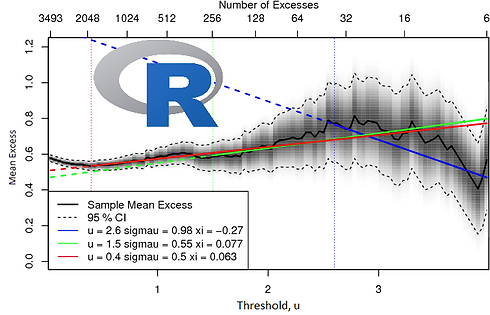
Virtual Blade Model (VBM) for wind and tidal current rotors
Developing a reliable and feasible tool for 2D and 3D CFD modeling of wind and tidal current rotors is a challenge in this field. VBM is a user-defined function (UDF) within Ansys Fluent software. Its efficiency and accuracy in rotor CFD modeling have been proven in many studies. But the problem is that the original UDF has only the ability to define ten rotors. My colleagues and I modified this UDF and proposed an approach to enable the code to accept more than ten rotors. In the following figure, the developed code is validated for 12 rotors.
Techno-economic assessment of renewable and clean energies
Techno-economic evaluation is a vital part of any engineering project that provides insights into the project's feasibility. I have a solid background in techno-economic assessments. I have published more than ten papers in this field and have reviewed various manuscripts in the Renewable and Sustainable Energy Reviews. Here is a list of my journal papers:
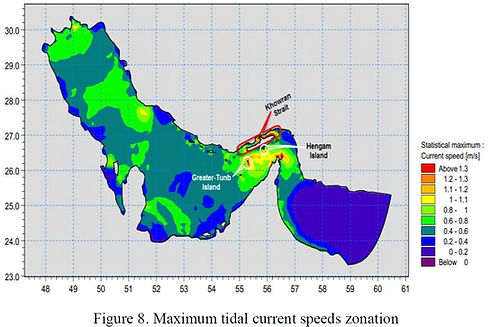
CFD modeling of brine jets
Providing fresh water is of the most crucial issues in many countries. So, there exists an increasing need for research and development on the systems like desalination plants. Salinity is one of the most acute adverse environmental effects of such plants. As an advisor of a master thesis, I have experience in the CFD modeling of brine discharges in shallow waters using Ansys Fluent. The outcome of this research is a journal paper in Farsi:
Non-dimensional criteria for jet independency in multi port and rosette systems in shallow seawater
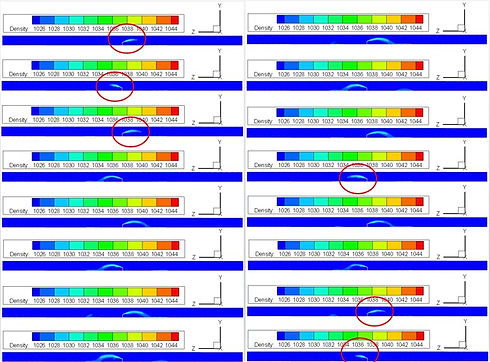
Papers based on class projects
My never-ending passion for publishing the research outputs led me to present the results obtained in my class projects. They are classified as follows:

Address
1062 Cyber Hall,
Tuscaloosa, AL 35487
Affiliation
Postdoctoral Fellow
Center for Complex Hydrosystems Research (CCHR) and Department of Civil, Construction and Environmental Engineering,
The University of Alabama

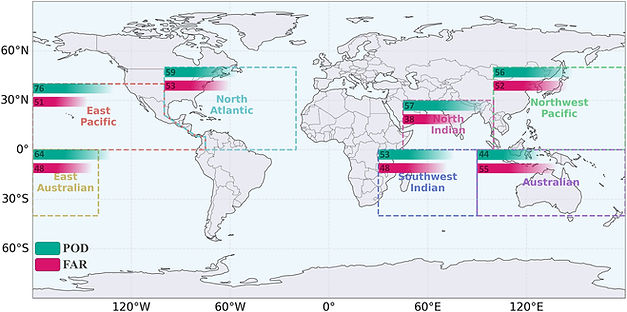
.png)

